Title
Japanese story-tellers
1899
Artists
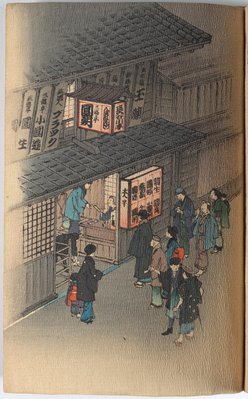
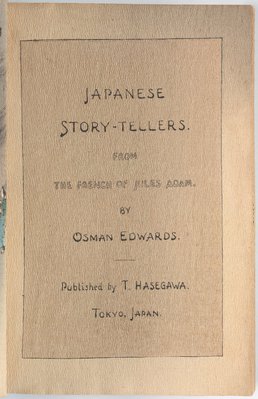
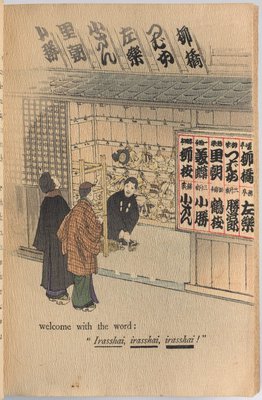
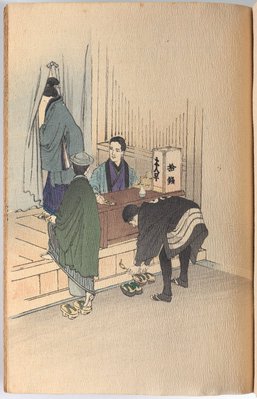
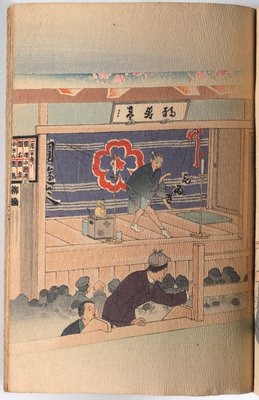
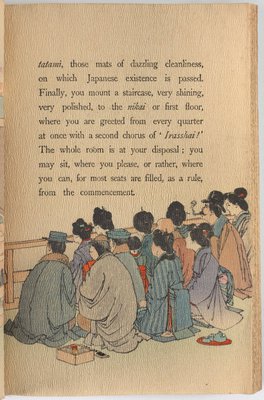



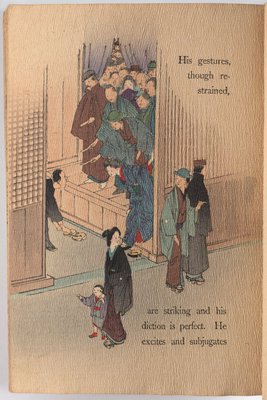
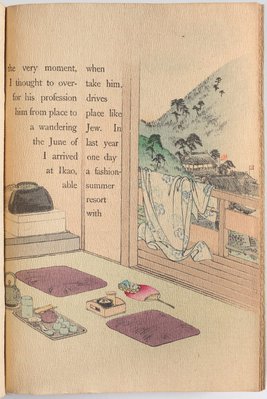
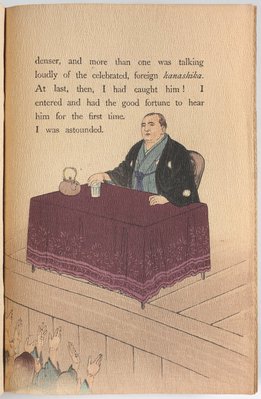

-
Details
- Place where the work was made
-
Japan
- Period
- Meiji period 1868 - 1912 → Japan
- Date
- 1899
- Media category
- Book
- Materials used
- bound book; 14 leaves; 16 prints, woodblock illustrated crêpe paper book
- Dimensions
- 19.2 x 13.8 cm leaf; 19.2 x 13.8 x 0.9 cm book closed; 19.2 x 250.0 cm book open
- Credit
- Gift of Lesley Kehoe 2010
- Location
- Not on display
- Accession number
- 122.2010.a-cc
- Copyright
- Artist information
-
Hasegawa Takejirō
Works in the collection
- Artist information
-
Jules Adam
Works in the collection
- Artist information
-
Osman Edwards
Works in the collection
- Share
-
-
About
These types of books are so-called 'chirimen-bon', books made of crêpe paper ('chirimen'), illustrated with multi-coloured woodblock prints and bound in Japanese style. 'Chirimen' books were invented in around 1885, when Hasegawa Takejiro, originally a businessman who turned to the import, publishing and selling textbooks for learning foreign languages, launched a series of English translations of popular Japanese folktales. Well-known Japanologists such as Basil Hall Chamberlain (1850-1935), Lafcadio Hearn (1850-1904), Karl Florenz (1865-1939) etc. were engaged as translators, while established artists like Kobayashi Eitaku (1843-90), Kawabata Gyokusho (1842-1913), Suzuki Kason (1860-1919) and others were responsible for the colourful illustrations in ukiyoe style.
The Hasegawa fairy tale series was such a success that 'chirimen' books on other themes like Japanese poems, regular annual events, traditional performing arts, lives of the common people, often written by foreigners living in Japan, were also published.
Catching the wave of Japonisme, 'chirimen' books were extremely popular as souvenirs for foreign visitors to Japan. They were also produced to represent Japan at the various World Fairs in Europe and America around the turn of the 20th century. The interest for fairy tales and other stories about Japanese traditional arts waned at the end of the Meiji period (1868-1912) and were replaced by calendars showing scenic spots of Japan, beautiful women at leisure and children at play.
With the development of mass publications in the Taisho (1912-26) and early Showa eras (1926-89), publications using this special paper diminished dramatically to only a small amount of calendars and other special products, as the paper could not be printed with the current technology and above all as the production of 'chirimen paper' is too complex to be mass produced.
Further reading:
About the production of "chirimen' paper, see article from the website of the National Diet Library: http://www.ndl.go.jp/en/publication/ndl_newsletter/166/666.html
‘The process of crinkling the paper is as follows. Several sheets of Japanese paper printed with illustrations and texts, slightly moistened, are rolled into a cylinder, which is then placed with the long side vertical, and compressed from above. The same process of reopening the sheets, rolling them again, and pressing, is repeated more than ten times, changing each time the direction of the sheets when re-rolling. In this way, the Japanese crêpe paper finally comes out.’Asian Art Department, AGNSW, April 2010.
-
Places
Where the work was made
Japan
